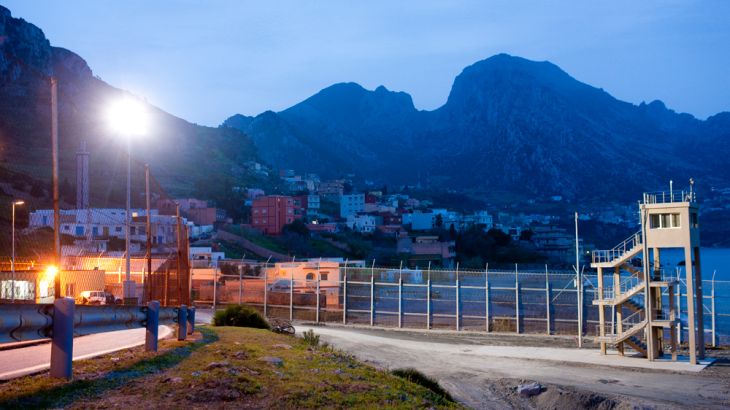
Walls of Shame: The Spanish-Moroccan Border
A look at the physical, religious and economic walls separating Africa from fortress Europe.
It matters little what they are called – walls, barriers or fences – the intention is the same: to redefine human relations into “us” and “them”.
The Walls of Shame series is about division, and about the barriers that men erect, in calculation or desperation, to separate themselves from others, or others from them. When diplomacy and conciliation fail, this is the alternative, and not since medieval times have walls been so in demand around the world.
Keep reading
list of 4 itemsUN report charts lethal cost of migration over past decade
Conflict, climate, corruption drive Southeast Asia people trafficking: UN
Bodies of three Rohingya found as Indonesia ends rescue for capsized boat
Tens of new walls, barriers and fences are currently being built, while old ones are being renovated. And there are many types: barriers between countries, walls around cities and fences that zigzag through neighbourhoods.
This series looks at four examples of walls around the world. It examines the lives of those who are living next to them and how their lives are affected. It also reveals the intention of the walls’ designers and builders, and explores the novel and artistic ways walls are used to chronicle the past and imagine the future.
Taking its name from John F Kennedy’s reference to the Berlin Wall in his state of the union address in 1963, this series examines four walls: the one on the American-Mexican border, the West Bank wall, the Spanish fence around Ceuta, and the walls inside the city of Belfast in Northern Ireland.
Fortress Europe: The Spanish-Moroccan border
Madrid insists that it will never relinquish control and has cordoned it off – prompting comparison with other walls of shame.
However, there are growing demands for a more constructive approach to the problem of illegal immigration. One man started a grassroots initiative that proved much more successful than walls and fences.
But within the town of Ceuta is another divide – a social division that is religious and economic – between the wealthy Christian Spaniards and their poorer Muslim compatriots of Moroccan descent.
This episode of Walls of Shame first aired in November 2007.
Update: 2015 was the deadliest year on record for migrants and refugees attempting to get into Europe. More than 3,700 people died – the majority on sea crossings between Libya and Italy or Turkey and Greece.
Almost 10 years ago, when the film was first broadcast, the number of migrant deaths on Spanish territory had reached its peak. The world’s media only started to take notice when the drowned bodies of African migrants began washing up on the tourist beaches of the Spanish Canary islands.
Spain’s response was to stiffen its border security, but despite all the effort and expense spent on beefing up its borders, migration is on the rise.
Migrants, hoping to be among the lucky few to reach the other side, have often rushed the border fence – sometimes with tragic consequences. On one occasion in Ceuta in 2014, at least 14 African migrants drowned when trying to swim from Morocco to Spain.
Those who made it alive were deported back to Morocco, on the other side of the wall.
Today, this no longer an issue isolated in a faraway Spanish enclave. The number of people hoping to reach Europe has swelled by a huge wave of refugees from wars in Syria, Iraq and Afghanistan.
Thousands of people are testing Europe’s borders, by the sea from Libya to Italy, and from Turkey to Greece, and then continuing over land to Europe’s more affluent countries.
In response Europe is building more walls. Today there are five existing fences across the continent, with at least another six either in construction or scheduled to be built.
Most of these walls separate EU nations from countries outside the European Union, but some fences are planned between member states – a move that is against the spirit of the EU, according to the its foreign policy chief.
“Europe was built on the idea that walls have to come down. It was built on the idea of coming together. Of overcoming differences. Of united. Walls are never the solution,” said Federica Mogherini, the EU High Representative, Foreign Affairs.
Without a political solution in sight, migrants and refugees remain undeterred, taking on increasingly dangerous routes into Europe.